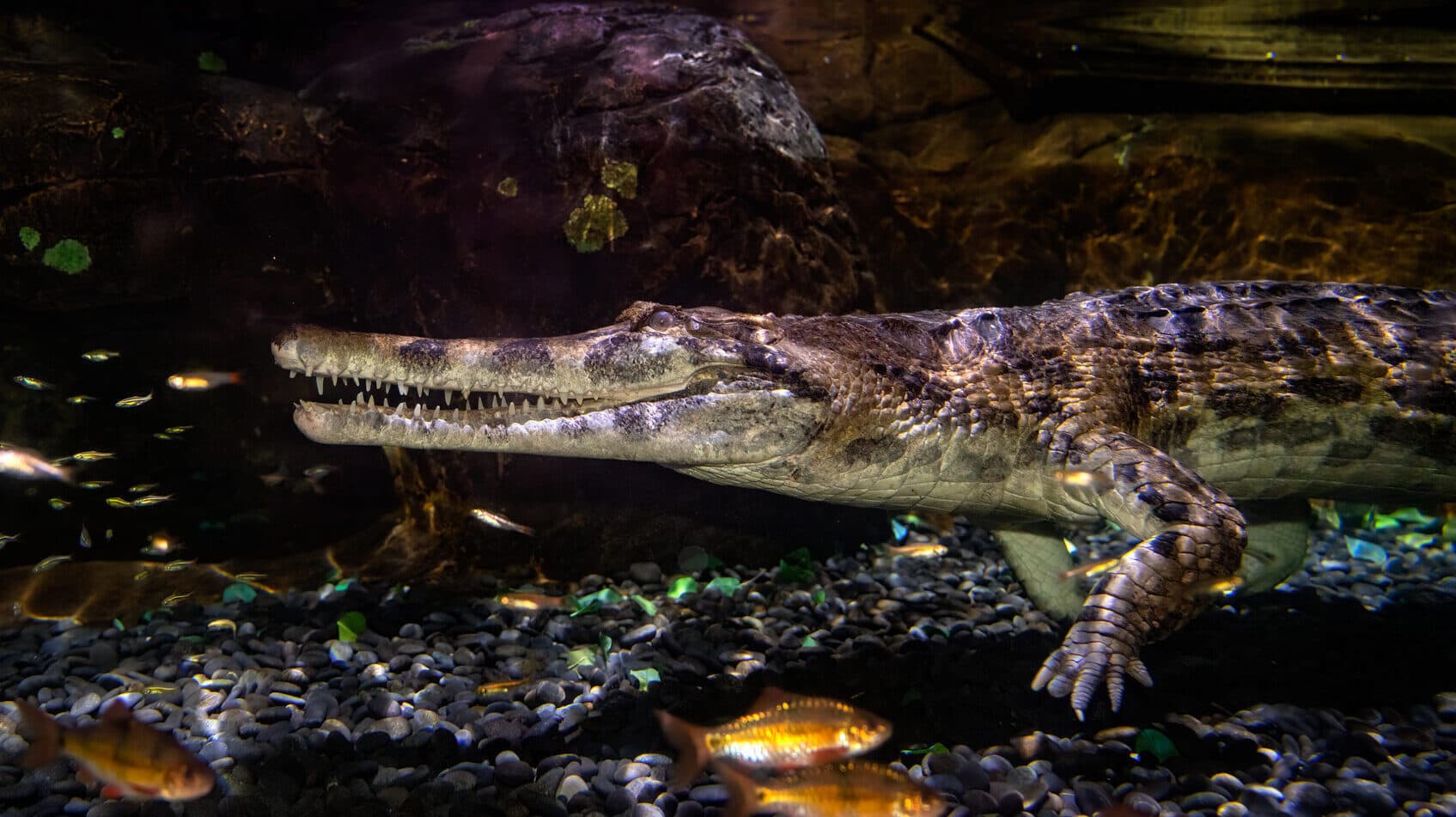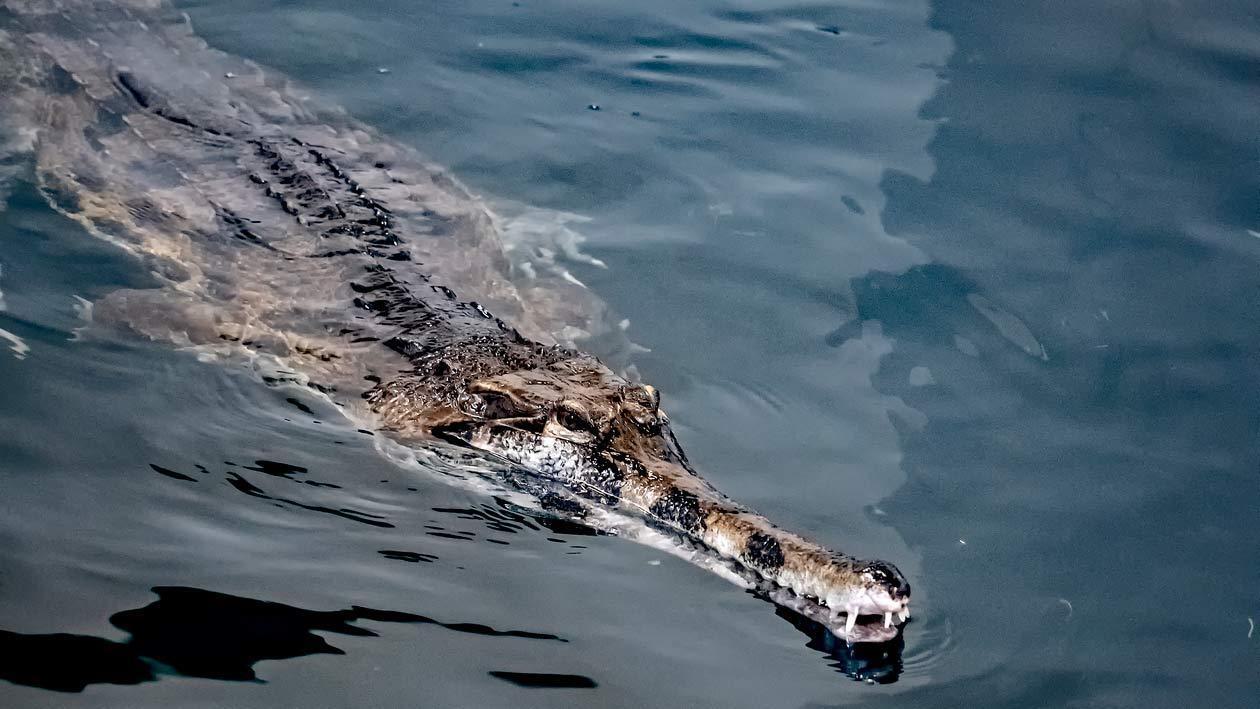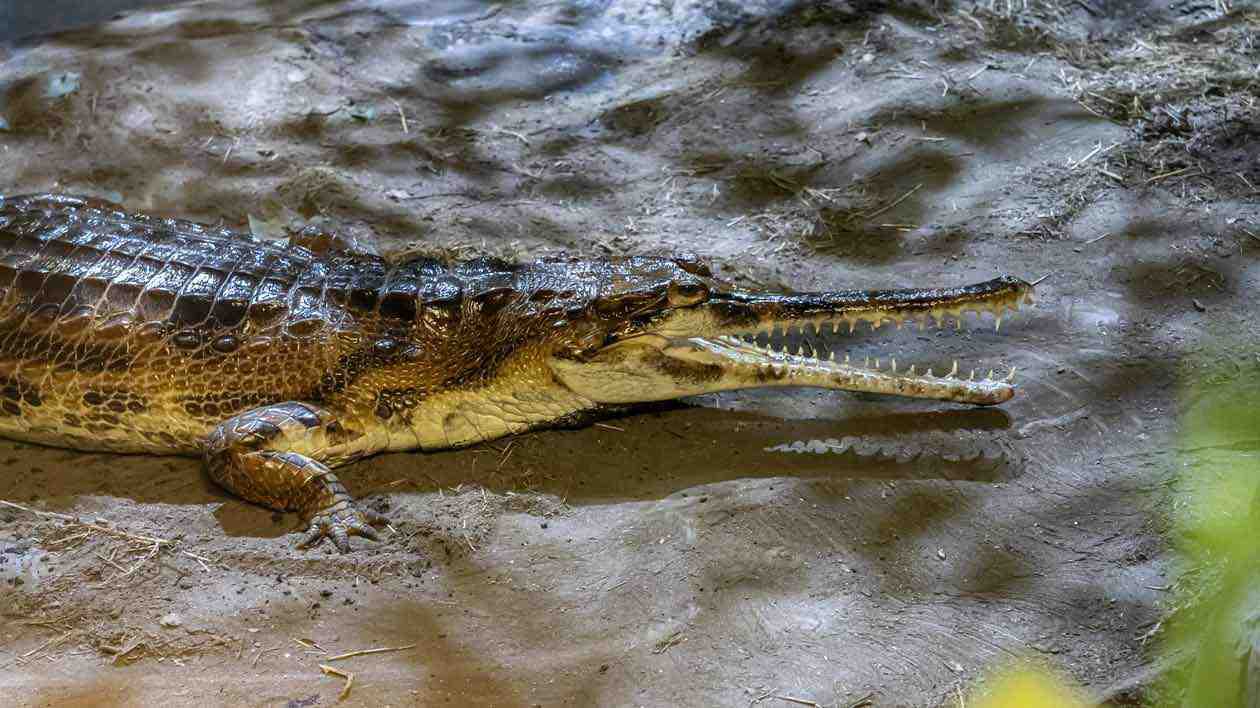Length: 13-16 feet
Weight: 200-460 pounds
Tomistomas have a long, narrow snout filled with sharp teeth, which looks similar to that of Indian gharials. They have long, streamlined bodies and a muscular tail. Their eyes and nostrils are located on top of their head, allowing them to spend most of their time almost completely submerged in water. Males are usually longer and heavier than females. Both adults and juveniles have dark brown coloration, with black bands on the tail and body. The belly is cream or white.
Diet
Tomistomas consume a diet consisting of a variety of fish, insects, crustaceans, birds, and small mammals. They are opportunistic carnivores and will eat whatever meat source they can get, snatching prey that comes to the shoreline and submerging it under the water.
Habitat
Historically, Tomistomas inhabited Southeast Asia, the Malay Peninsula, and the islands of Borneo and Sumatra. However, today in Thailand and Vietnam, the species appears to be extinct, though there have been unconfirmed sightings reported in Vietnam. The densest populations are seen in Kalimantan, the Indonesian portion of the island of Borneo. In other parts of the region, widespread but low-density populations have been observed inhabiting freshwater swamps, lakes, and rivers, where water is slow-moving with heavy vegetation.
Reproductive Behavior
Tomistoma nests are rarely found in their natural environment, so there is extremely limited information on the reproductive habits of this species.
Communication
While Tomistomas are generally solitary and little has been recorded regarding their communication, those working closely with them theorize that they may communicate using sight, smell, and touch. Even mating behavior has been seen to be silent.
Concerns
The Tomistoma is threatened with extinction due to the drainage of freshwater swamplands and clearance of surrounding rainforests. The palm oil industry is a large factor, though efforts have been made internationally to promote sustainable oil farming practices. Tomistomas are frequently hunted for their skin and meat, and eggs are often taken for human consumption.
Celebrations
The Virginia Aquarium is actively involved in the work of conserving this species by participating in AZA’s Species Survival Plan Program. Learn more about this work on our Conservation page, and stop by the Restless Planet Exhibit to visit our Tomistomas. Our resident pair, Ralf and Sommer, produced a pair of healthy hatchlings in 2022 that have been growing and thriving since!





